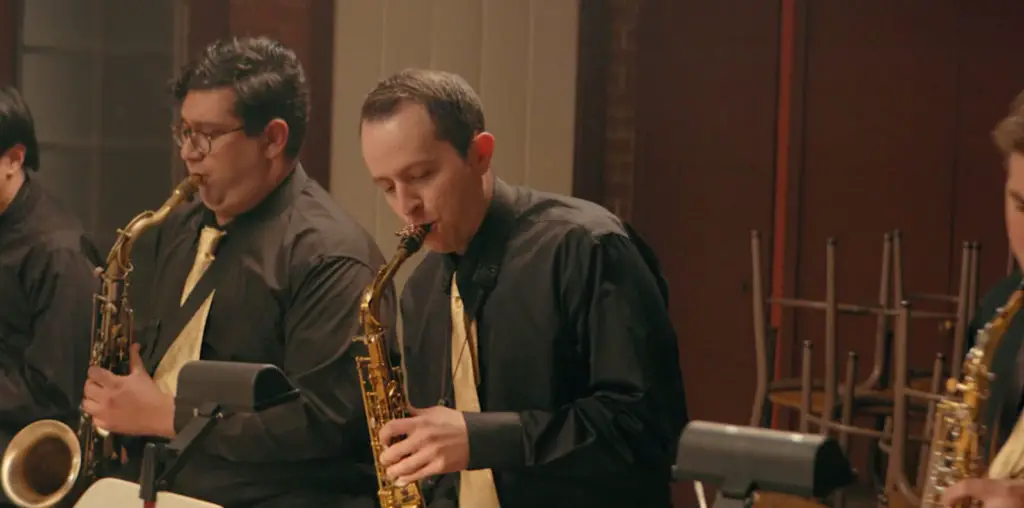
Olivia’s boyfriend has recently left town, and she’s stayed behind. Utilizing music that she listens to via headphones as she walks, isolated, throughout her day, she remembers and re-experiences her past emotions and thoughts. Via voicemail messages and conversations with friends, we follow along with her thoughts and feelings, though she remains detached from us as traditional narrative and dialogue stays away for large chunks of time.
As time winds on, however, she begins to catch up with her own reality, and question not only her identity but the value of spending so much time ruminating in emotions long gone by, as opposed to listening and experiencing what the sound of the here-and-now could invoke, if only she’d be open to, and aware of, it. Her relationship with herself, and potentially Nature, begins to evolve.
Olivia has been occupying my brain for a little while now, as I’ve been at a loss for how best to review the film (my opinion of it changes depending on the perspective I take). While 55 minutes may constitute a feature film in the technical definitions of some people and film festivals, to me it doesn’t read best as a feature so much as a truly over-stretched short film. Which is to say that I feel that within the 55 minute running time is a really strong, powerful 10-15 minute short.
And those 10-15 minutes would be an incredible visual poem, or possibly philosophically-inclined experimental film, focused on personal identity, and the ways in which we define ourselves and our surroundings, with a nice dash of universal connection thrown in for good measure. Because I feel those moments within this film, and they are what I cling to when I think about it the most, but I feel like they are surrounded by unnecessary fattening elements. This film languishes at 55 minutes, but it could soar if the right moments were allowed to breath within a smaller context.
Okay, enough about running time. The film’s visual style, and my enjoyment thereupon, changes throughout. I’ll admit to being drawn to the more artistic set-ups and staging (there are quite a few gorgeous shots and moves reminiscent of some of Spike Lee’s own visual style that I appreciated), and a little turned off by the more ragged, handheld footage. I had a similar conflict with the sound work, as I understand that a major chunk of the film is explored and explained via voicemails and other messages, and that music plays an extremely strong part in the development of Olivia and her narrative, but sometimes the combination of the different audio styles at the same time became abrasive to the ear. I understand the value of it, and I like the ideas expressed via such a technique, but perhaps more massaging in the audio mix would’ve been better.
So there we have another tale of being stuck in the middle between the good and the bad, which continues with the acting performances. Larina Sias as Olivia is an incredible talent, and she does an admirable job of keeping you engaged throughout, even when you’re just hearing her leave a voicemail message over a shot of her listening to music. If you do stick with the full film, it’s because of her presence.
On the other side, though, you have peripheral characters like Roo, played by filmmaker Edgar Muñiz, that, while allowing for a more traditional set-up for Olivia to explain where her head is at for the audience, also take away from the experience by being far too over-the-top obnoxious. Roo makes it very clear that he’s attracted to Olivia, over and over and over again, even when she’s trying to have a real conversation with him. The first few comments are a little funny, but then it just wears you down with the ever-skipping record nature of it all.
Overall, though, while the aspects I disliked about the film continue to standout, it is not a simply dismissible film experience for me. When it is on, you’re drawn right in and held there, wanting to know where it’s all going. As I said above, I feel there’s enough elements of that strength within it to fill a much smaller piece. As it currently is, it’s far too much filler.
This film was submitted for review through our Submission for Review system. If you have a film you’d like us to see, and we aren’t already looking into it on our own, you too can utilize this service.

